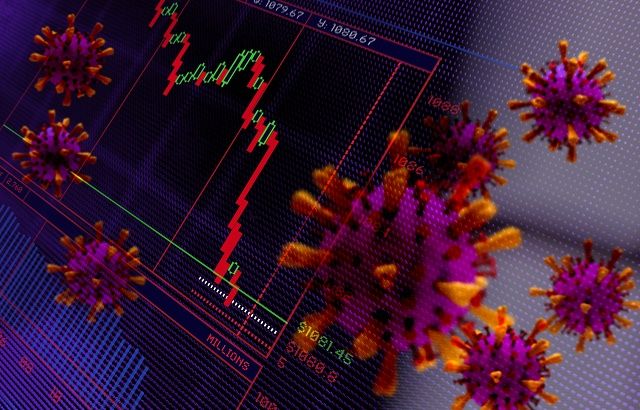“A sizeable number of equity managers have indeed been able to successfully navigate one of the most volatile market environments in recent history,” said Vincent Denoiseux, head of ETF research and solutions at Lyxor Asset Management.
He was commenting on a report titled Active-Passive Navigator: H1 2020, of which he was one of the authors.
It analyses the performance of EU-domiciled funds relative to their benchmarks, as well as global performance trends.
For each asset category, it compares fund and exchange-traded fund (ETF) performance against the most investable and replicable benchmarks.
On average, 53% of active equity fund managers beat their benchmarks in the first half of 2020, the research found.
However, active fixed income managers lagged in performance during the period, with only 33% of funds outperforming their benchmarks.
Equities
The analysis found that active small-cap funds outperformed their benchmarks strongly in both Q1 and Q2.
UK small cap funds delivered a hit ratio of 76%, ahead of Europe small cap funds with 75%, compared to their respective net benchmark (in euros) (see table below).

UK and Europe small cap funds also produced most excess return, with 5.3% and 5.2% respectively, after US small cap funds, with 7.4% (see table below).

Despite this, UK small cap funds delivered the worst overall performance in the first half of the year (see graph below).

UK funds were hit badly during the crisis, but managers of small cap funds outperformed their benchmarks more than many others.
Sell-off
US active funds did better than average in the first three months, supported by higher sector bias towards the tech sector.
In March and April, during the heavy sell-off, “the performance of most fundamental stock-picking styles was challenged”, the report said.
“Market timing, sector arbitrage and risk management were the key differentiating factors of active managers’ performance,” it noted.
As small-cap stocks were sold heavily during the market crash, successful managers were able to take advantage of clear sector rotations (out of cyclical and value stocks into defensive, growth and quality stocks). Small-cap active funds strongly outperformed their benchmarks during this period.
Emerging market (EM) equities, however, suffered record outflows in dislocated markets and poor liquidity conditions. Active managers in EM equities struggled to capture the outperformance of Chinese equities and of some other EM Asia countries, the report said.
Recovery
In the recovery period from April to June, small-cap managers performed best.
UK managers benefited from greater stock dispersion and a weaker pound due to Brexit tensions and a worsening economic outlook, the report notes. Equally, funds exposed to Japanese equities regained the ground lost in Q1, thanks to high stock dispersion.
Fundamental approaches also gained from the temporary rebound of value stocks, driven by unprecedented monetary and fiscal support.
“Thematic investing on dollar weakness, low yields, strong balance sheets, operational leverage, or secular themes (including 5G, cloud, clean energy, cybersecurity) were all a source of excess returns,” the report notes.
Fixed income
However, in fixed income, “most managers failed to keep up with the record monetary and fiscal stimulus unleashed across the world, which anchored yields to their lows and sent bond prices higher,” Lyxor said.
“Investors were better off with passive funds in most fixed income segments with the notable exception of high yield”, the report notes.
Euro high yield managers performed best with a hit ratio of 51%, compared to Euro Aggregate with the worst ratio of 13%.
EM hard currency debt funds did well, with 41%, thanks to the improved market environment allowing for relative value plays (see table below).

While US Government funds performed best overall, with 6.2%, in terms of excess return, all funds returned negative and no category was able to outperform its benchmark (see table below).

The market downturn was particularly severe for high-yield bonds.
“Liquidity dried up, with record outflows and surging bid-ask spreads. Implied volatility levels in the credit market shot up to levels not seen since the height of the 2008 global financial crisis,” the report said.
High-yield active funds gave up all their previous relative gains from Q1 in Q2, as benchmarks benefited from broad-based spread tightening and massive flows. Funds in Europe held their ground from March.
Jean-Baptiste Berthon, senior cross-asset strategist at Lyxor, said: “After a memorable H1, investors still face an atypical environment, characterised by elevated asset price dispersion, distorted valuations due to stimulus, reduced fiscal and political predictability, and the difficulties of portfolio hedging when yields are grounded.”
Berthon believes that going forward “seeking out diversification and alternative sources of performance will be key” and recommends an “agile combination of active and passive strategies”.
Denoiseux added that, “over a longer observation window, sustainable alpha generation remains a difficult exercise for most”.
The rate of outperformance for active equity managers dropped to 36% over a five-year period, which highlights the importance of careful fund selection and strategic portfolio allocation, according to Lyxor.







